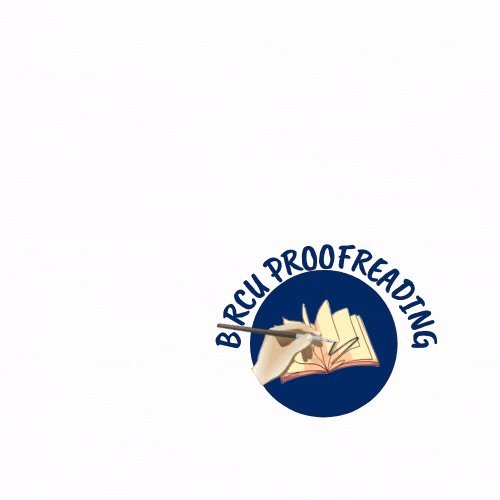Understanding Customer Behavior In An Online Travel Agent: The Influence of Gender, User’s City Location, and Loyalty Status towards Promotion Usage during COVID-19 Pandemic
Abstract
With the rising popularity of online activity and state-of-the-art technology these past few years, it is only natural that the travel agency industry has shifted its focus from offline to online selling. Rising demand for online travel purchases means Online Travel Agent (OTA) needs to stay competitive in the industry. Moreover during COVID-19 it is becoming more important to stay competitive. Among all of the 50 plus online travel agencies in Indonesia, there are several that are bigger than the others; these include Traveloka and tiket.com. One of the strategies that these companies implement to stay competitive is giving out promotion vouchers; however, do they really work for all of their customers? In order to best understand OTA customers, this research analyzes the impacts of gender, city demographic, and the user’s loyalty status in an Indonesian Online Travel Agent on each customer’s usage on promotion vouchers. Data was collected from tiket.com’s database. The findings will provide evidence as to whether the gender, user’s city location, and the loyalty member status have a positive effect on promotion voucher usage in an Online Travel Agent.
Keywords
Full Text:
PDFReferences
Briandana, R., Caturida, & Sukmajati, D. (2018). Promotion Analysis of Marine Tourism in Indonesia: A case study. EUROPEAN RESEARCH STUDIES JOURNAL, XXI(Issue 1), 602–613. https://doi.org/10.35808/ersj/973
Briandana, R., Caturida, & Sukmajati, D. (2018). Promotion Analysis of Marine Tourism in Indonesia: A case study. EUROPEAN RESEARCH STUDIES JOURNAL, XXI(Issue 1), 602–613. https://doi.org/10.35808/ersj/973
Chandra, T., -, P., & Hakim, L. (2015). The influence of location, products, promotions, services with respect to consumer behavior (studies in the indo march Raya Darmo Surabaya). Review of European Studies, 7(12). https://doi.org/10.5539/res.v7n12p48
Choy, M. W., & Kamoche, K. (2020). Identifying stabilizing and destabilizing factors of job change: A qualitative study of employee retention in the Hong Kong travel agency industry. Current Issues in Tourism, 24(10), 1375–1388. https://doi.org/10.1080/13683500.2020.1792853
Comprehensive R Archive Network (CRAN). (n.d.).(2022). Package conover.test. CRAN. Retrieved February 9, from https://cran.r-project.org/web/packages/conover.test/index.html
Demunter, C.; Dimitrakopoulou, K. (2013). Tourism Industries—Economic Analysis; Eurostat: Kirchberg, Luxembourg.
Dictionary.com. (n.d.). (2022). City Definition & meaning. Dictionary.com. Retrieved February 9, from https://www.dictionary.com/browse/city
Dou, R., & Cian, H. (2021). Constructing stem identity: An expanded structural model for STEM identity research. Journal of Research in Science Teaching, 59(3), 458–490. https://doi.org/10.1002/tea.21734
Hanusz, Z. (n.d.). (2022). (PDF) shapiro–wilk test with known mean - researchgate. Retrieved February 9, from https://www.researchgate.net/publication/298706800_Shapiro-Wilk_test_with_known_mean
Harmon, S. K., & Jeanne Hill, C. (2003). Gender and coupon use. Journal of Product & Brand Management, 12(3), 166–179. https://doi.org/10.1108/10610420310476924
Hendrawan, D., & Anggraeni, R. (2020). Is the loyalty program effective in creating loyalty program satisfaction and store loyalty? An evidence from Indonesia retail industry. Jurnal Aplikasi Manajemen, 18(4), 645–655. https://doi.org/10.21776/ub.jam.2020.018.04.04
Indonesia Cities Database simplemaps. (n.d.). Retrieved February 9. (2022). from https://simplemaps.com/data/id-cities0
Knox, S., & Walker, D. (2001). Measuring and managing brand loyalty. Journal of Strategic Marketing, 9(2), 111–128. https://doi.org/10.1080/713775733
Kumar, V., & Shah, D. (2004). Building and sustaining profitable customer loyalty for the 21st Century. Journal of Retailing, 80(4), 317–329. https://doi.org/10.1016/j.jretai.2004.10.007
Li, K. X., Jin, M., & Shi, W. (2018). Tourism as an important impetus to promoting economic growth: A critical review. Tourism Management Perspectives, 26, 135–142. https://doi.org/10.1016/j.tmp.2017.10.002
Luo, M., Li, G., & Chen, X. (2020, September 29). Competitive location-based mobile coupon targeting strategy. Journal of Retailing and Consumer Services. Retrieved February 9, 2022, from https://www.sciencedirect.com/science/article/abs/pii/S0969698920313217
Niati, D. R., Siregar, Z. M. E., & Prayoga, Y. (2021). The Effect of Training on Work Performance and Career Development: The Role of Motivation as Intervening Variable. Budapest International Research and Critics Institute (BIRCI-Journal): Humanities and Social Sciences, 4(2), 2385–2393. https://doi.org/10.33258/birci.v4i2.1940
Ostertagová, E., Ostertag, O., & Kováč, J. (2014). Methodology and application of the kruskal-wallis test. Applied Mechanics and Materials, 611, 115–120. https://doi.org/10.4028/www.scientific.net/amm.611.115
Population by region - urban population by city size - OECD data theOECD. (n.d.). Retrieved February 9, (2022), from https://data.oecd.org/popregion/urban-population-by-city-size.htm
Published by Statista Research Department, & 19, O. (2021, October 19). Indonesia: Leading Online Travel Agencies 2020. Statista. Retrieved February 9, 2022, from https://www.statista.com/statistics/1200620/indonesia-most-used-online-travel-agencies/
Shah, M. M., et al. (2020). The Development Impact of PT. Medco E & P Malaka on Economic Aspects in East Aceh Regency. Budapest International Research and Critics Institute-Journal (BIRCI-Journal) Volume 3, No 1, Page: 276-286.
Wang, P., Du, R., & Hu, Q. (2020). How to promote sales: Discount promotion or coupon promotion? Journal of Systems Science and Systems Engineering, 29(4), 381–399. https://doi.org/10.1007/s11518-020-5457-1
Werdhiastutie, A. et al. (2020). Achievement Motivation as Antecedents of Quality Improvement of Organizational Human Resources. Budapest International Research and Critics Institute-Journal (BIRCI-Journal) Volume 3, No 2, Page: 747-752.
DOI: https://doi.org/10.33258/birci.v5i1.4499
Article Metrics
Abstract view : 106 timesPDF - 43 times
Refbacks
- There are currently no refbacks.

This work is licensed under a Creative Commons Attribution-ShareAlike 4.0 International License.

This work is licensed under a Creative Commons Attribution-ShareAlike 4.0 International License.

_.gif)

















_.gif)



